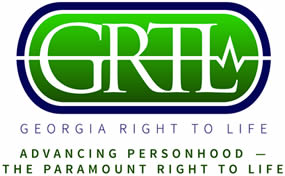
December 2018 – Article 3:
Ongoing research continues to demonstrate the need to resist efforts to abandon those considered to be in a vegetative state.
These developments are a clear break from attitudes in the past.
In 1968, an ad hoc Harvard Medical School committee declared that patients in an “irreversible coma” were dead from a legal and ethical point of view.
The pronouncement was quickly adopted in the United States and around the world and became the most common standard by which vital organ procurement and the withdrawal of treatment was regulated.
Fast forward to today when a growing body of evidence shows that many such individuals have been misdiagnosed and are even able to communicate.
Most encouraging are the efforts of Dr. Adrian Owen at the University of Western Ontario and author of “Into the Gray Zone: A Neuroscientist Explores the Boarder Between Life and Death.”
There are tens of thousands of patients in a so-called vegetative state in the U.S. alone, and Dr. Owen estimates that up to 20 percent of them are capable of communicating using new techniques.
Dr. Owen employs functional magnetic resonance imaging (fMRI) to monitor changes in blood flow to certain parts of the brain to confirm that a patient understands speech and is capable of responding to questions.
He believes his technique will help identify patients who might respond to rehabilitation; determine more effective medications to use; and explore the potential for feelings and desires in the minimally conscious.
“We can ask them if they are in pain and what would make them more comfortable,” he says.
However, even if a person in a vegetative state is able to communicate, there is no guarantee they will ever be able to return to a normal life.
Dr. Owen nevertheless insists that “clarifying” a patient’s state of consciousness helps families deal with the situation. “They want to know what the diagnosis really is so they can deal with that. Doubt and uncertainty are always bad things,” he says.
Going forward, Dr. Owen plans to study 25 people in a vegetative state every year. One goal is to identify other brain systems, such as smell or taste that might be intact and usable for communication.
Other studies will explore whether these patients have the capacity for greater intellectual depth.
At the same time, another development confirms that there has been a rush to judgement on how to deal with patients who are unconscious for long periods of time.
Recently released guidelines from three specialty groups, including the American Academy of Neurology, outline 15 recommendations for “accurate diagnosis, prognosis and treatment for” patients considered to be minimally conscious or in a vegetative state.
Dr. Joseph Giacino, one of the authors, claims that the new guidelines are needed because as many as 40 percent of such cases are misdiagnosed, leading to inappropriate care decisions, as well as poor health outcomes.
The report says these patients should be treated by “multidisciplinary teams with specialized training to optimize diagnostic evaluation, prognostication, and subsequent management, including effective medical monitoring and rehabilitative care.”
Dr. Joseph Fins, Chief of Medical Ethics at Weill Cornell Medical College, says the new guidelines are “a real step forward for this population that has historically been marginalized and remains vulnerable.”
There’s no better example for not marginalizing—or not writing off—such patients than that of Niall McGrath.
The Ireland native stunned doctors when he came out of his 21-year coma in 2010.
He was pronounced clinically dead in 1989. The experts were wrong. Even though life-sustaining treatment was withdrawn he remained alive and has been steadily improving ever since.
Niall could not speak or move until he awoke, but now is able to stand for up to 25 minutes and can transfer himself from a wheelchair to his bed, The Irish Sun recently reported. He also uses an iPad and attends speech therapy.
His family told the paper that he would be dead if the ruling issued by the UK’s Supreme Court last month had been in effect when he was in a coma.
The court ruled that patients in a so-called permanent vegetative state (PVS) or minimally conscious state can be dehydrated to death without permission from the court.
Similar dangers exist in the United States. There are countless cases of patients who were considered hopeless and taken off life support, or even starved to death.
Everyone who values the sanctity of life is strongly encouraged to become familiar with these issues and demand that physicians not rush to judgement on a patient’s condition.
(For more information on medical definitions related to states of consciousness see the Georgia Right to Life newsletter article titled: Wanted Dead or Alive Part II: Essential Medical Terminology).
Sources: alexschadenberg.blogspot.com; thesun.ie; brainworldmagazine.com; nature.com; nytimes.com; nancyvalko.com.
By Wayne DuBois
Georgia Right to Life
Media Relations Advisor
